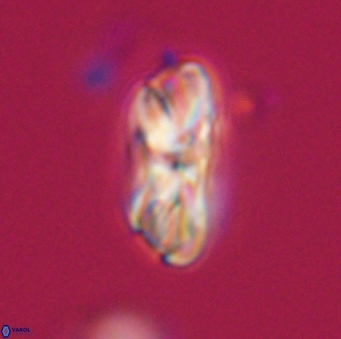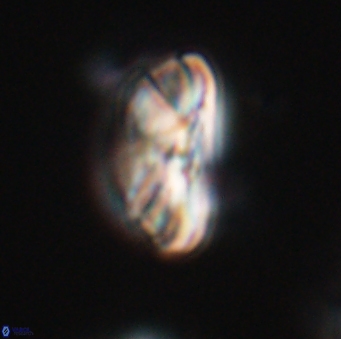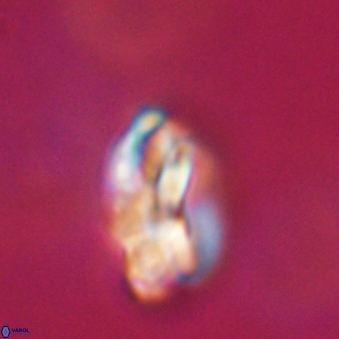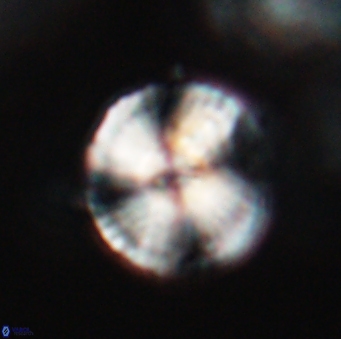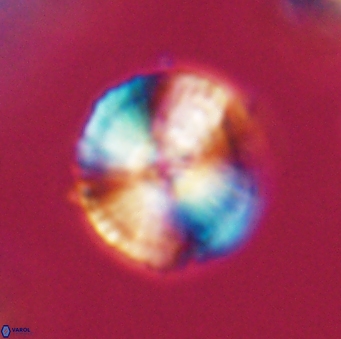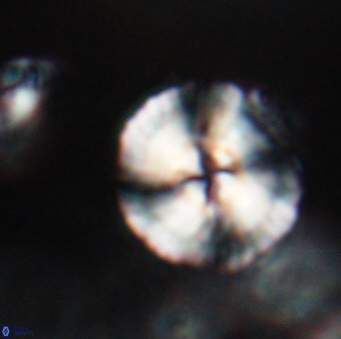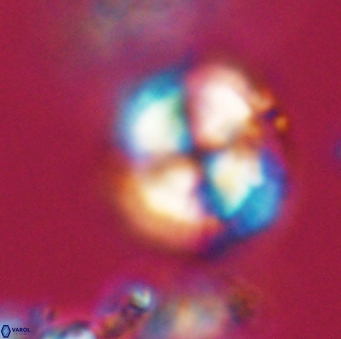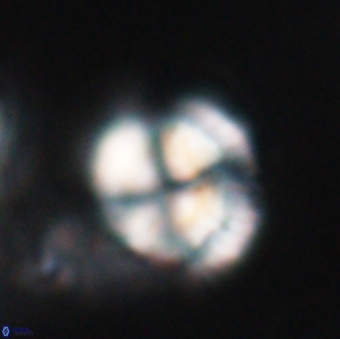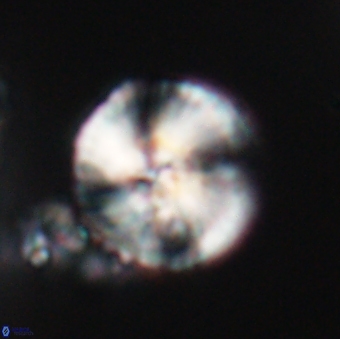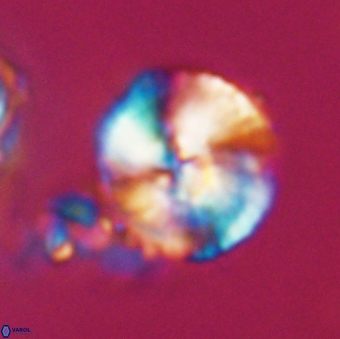Heliotrochus steurbautii
Set number: 2332
-
1
-
2
-
3
-
4
-
5
-
6
-
7
-
8
10µm
In the mobile mount
Set number: 2333
-
1
-
2
-
3
-
4
-
5
-
6
-
7
-
8
10µm
Set number: 2334
-
1
-
2
-
3
-
4
10µm
Set number: 2335
-
1
-
2
-
3
-
4
-
5
-
6
-
7
-
8
10µm
Heliotrochus steurbautii Bowman & Varol, 2021
A large circular form constructed of two thin discs, a low column and a central area with a plug/tube cycle. The gradual decrease in diameter illustrates a gradual reduction from the proximal disc to the column is a diagnostic feature of the species.
In honour of Dr E. Steurbaut, a seasoned nannofossil specialist, Brussels, Belgium.
Overall height: 3.72μm; proximal disc diameter: 9.10μm; median disc diameter: 7.98μm; Column diameter: 6.41μm.
Large (7.0–10.0μm) circular species of Heliotrochus comprised of two discs, a column and a central area with a plug/tube cycle. The discs are flat, and the diameter of the proximal disc is only slightly greater than the diameter of the median disc (better seen in the side-view). The diameter of the low column is fractionally less than the diameter of the median disc. In the side-view, the discs and column demonstrate a gradual decrease in diameter from the proximal disc to the column. The discs and the low column , with equal height/thickness, produce a compressed character in the side view. The discs and the column appear striated in plan view.
In cross-polarised light, the distal side corresponds to the presence of dextrogyre extinction lines, whereas observation of laevogyre extinction lines characterises the proximal side. When viewed using a gypsum plate, the distal side shows alignment between the horizontal axis and the blue section. The orientation of the vertical axis with the blue area reflects the proximal side. The discs and column are birefringent in side-view and plan-view, and display a yellowish white birefringence colour in plan-view.
Heliotrochus steurbautii and the Bomolithus species are differentiated based on column height (e.g., Heliotrochus steurbautii has a low column, while the Bomolithus species possess a high column). Heliotrochus steurbautii has discs of unequal diameter, but the discs of Heliotrochus trypa exhibit equal diameter. In addition, Heliotrochus trypa displays a relatively large central opening, whereas Heliotrochus steurbautii possesses a narrow central opening with a plug/tube cycle. Heliotrochus steurbautii differs from Heliotrochus kleinpellii by exhibiting a gradual decrease in diameter throughout the proximal disc-median disc-column (better seen in side-view). The smaller central opening with plug/tube cycle of Heliotrochus steurbautii is a crucial feature separating it from the species of Tonromeinia, which demonstrate a large central opening. Moreover, the discs/column display equal diameter in the species Tonromeinia, whereas Heliotrochus steurbautii has discs and a column of slightly different diameters.
Bowman, A. R. & Varol, O. 2021. A Taxonomic Revision of Heliolithaceae - Applications in Resolving the Problematic Calcareous Nannofossil Biostratigraphy of the Paleocene. In: M. Montenary, M. (Ed.). Calcareous nannofossil biostratigraphy of the Stratigraphy and timescales. 6: 43-223.
